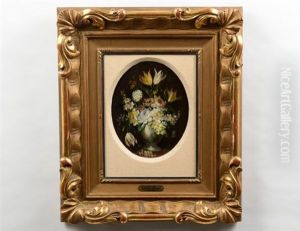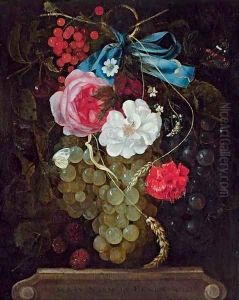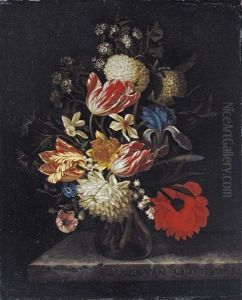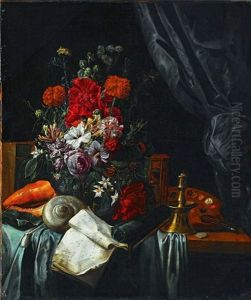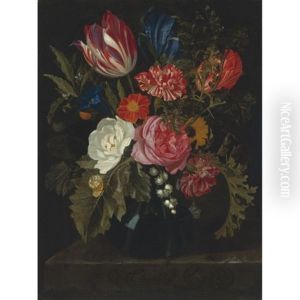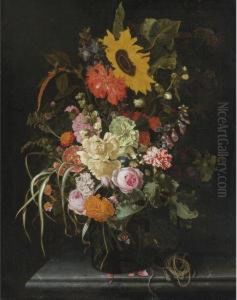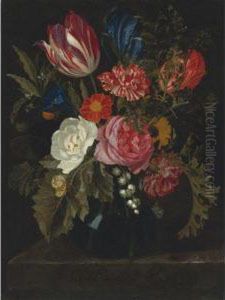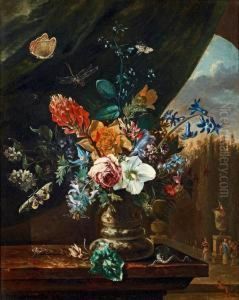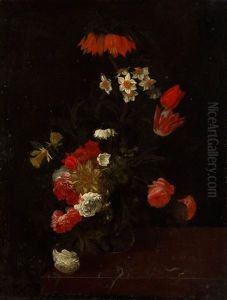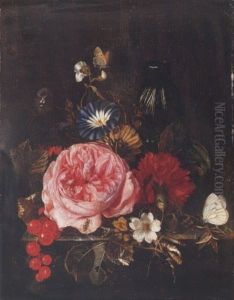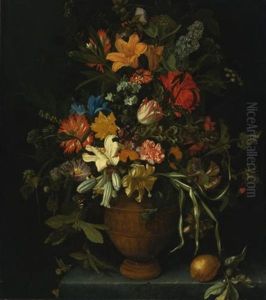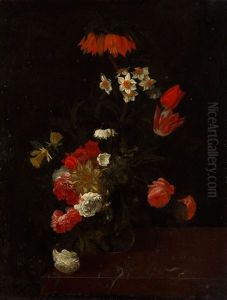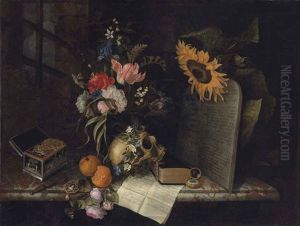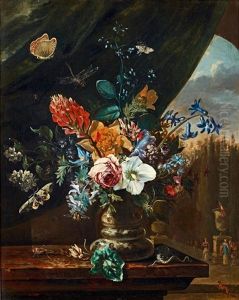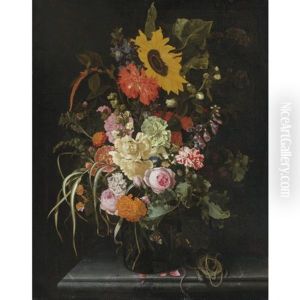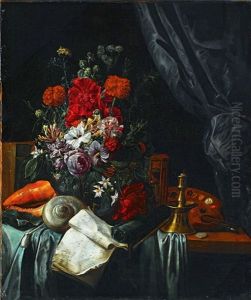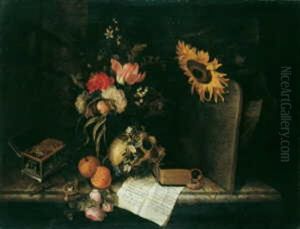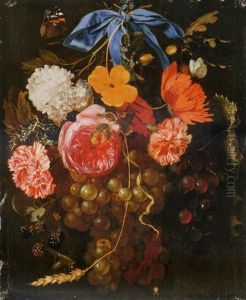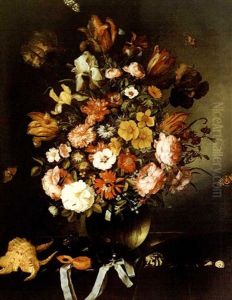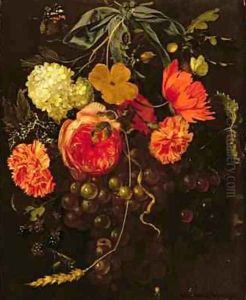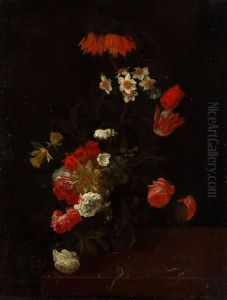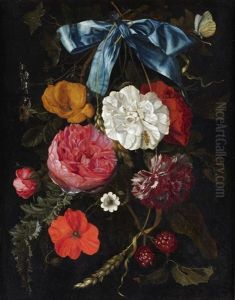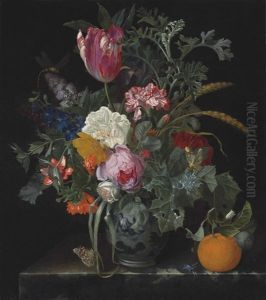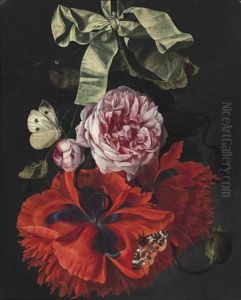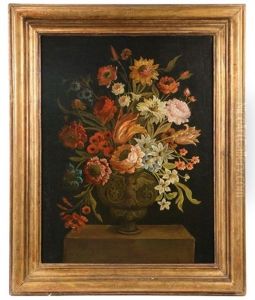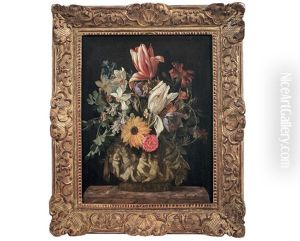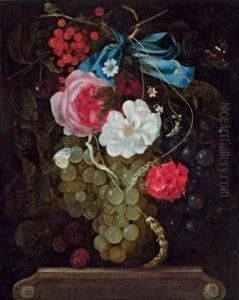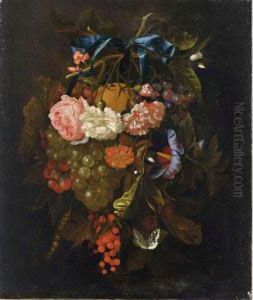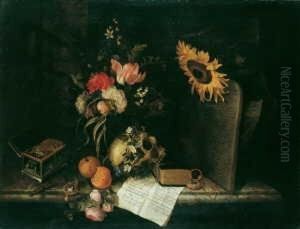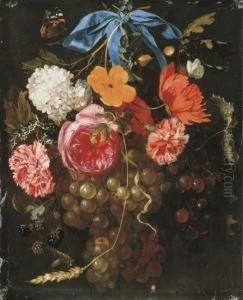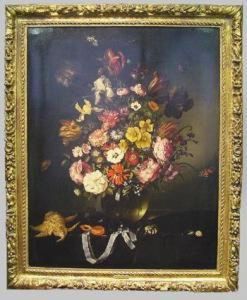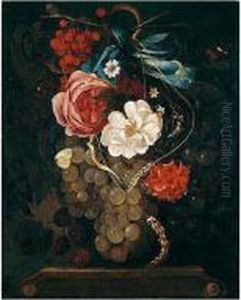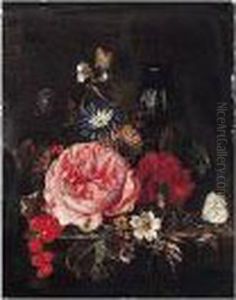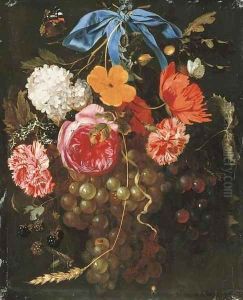Maria van Oosterwyck Paintings
Maria van Oosterwyck was a prominent Dutch Golden Age painter known for her exquisite still life paintings, particularly those featuring flowers. Born in 1630 in Nootdorp, near Delft, Netherlands, she was one of the few female artists of her time to gain significant recognition and success in the male-dominated art world of the 17th century.
Van Oosterwyck was primarily self-taught, although she received some formal training from Jan Davidsz de Heem, a well-known still life painter of the era. Her work is characterized by its meticulous detail, vibrant colors, and the intricate arrangement of flowers, which she rendered with exceptional realism and depth. She often included symbolic elements in her compositions, such as butterflies, insects, and shells, which added layers of meaning to her paintings.
Despite the challenges faced by women in the arts during her time, van Oosterwyck achieved considerable fame and financial success during her lifetime. Her patrons included members of the nobility and royalty across Europe, and her works were in high demand. She remained unmarried and dedicated her life to her art, a choice that was relatively uncommon for women of her era.
Maria van Oosterwyck's legacy is significant, not only for her contribution to the Dutch Golden Age of painting but also as a pioneering figure for women in the arts. Her paintings are preserved in several major museums around the world, where they continue to be admired for their beauty and technical skill. She passed away in 1693 in Uitdam, leaving behind a body of work that continues to be celebrated for its artistic excellence and historical importance.
